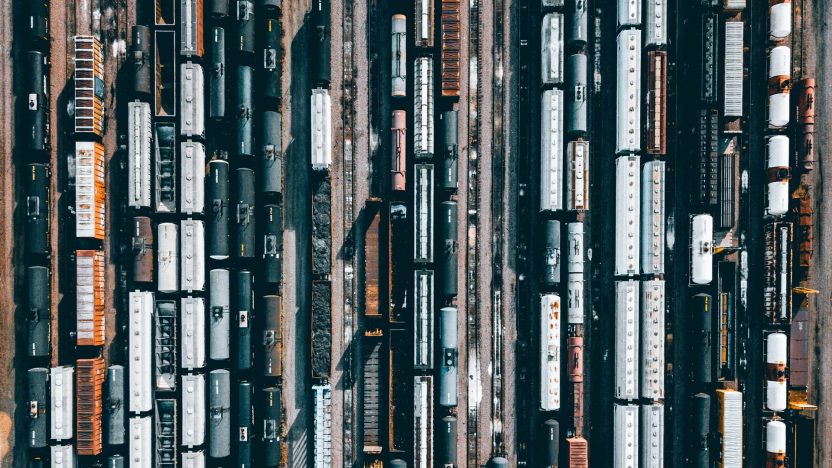IOTA in the new mobility
With the digital transformation of mobility, IOTA can help us mitigate risk associated with cyber attacks and data security.
by Jochen Renz

IOTA is a Distributed Ledger Technology that delivers many of the same benefits associated with blockchain technologies, such as a shared identity and network-based trust. It creates an immutable ledger of data that is stored across a distributed network. It enables peer-to-peer asset transfer and monetary exchange without central intermediaries.
However, IOTA is not based on a blockchain with its associated scalability challenges, energy consumption and transaction fees. The IOTA tangle is a Directed Acyclic Graph (DAG) to create a distributed ledger that scales and has no transaction fees. Lightweight clients and the IOTA tangle’s off-line capabilities make it a perfect fit for the Internet of Things (IoT). By enabling trusted connectivity and micro-transactions, IOTA uniquely enables the Internet of Things (IoT) and the emerging Machine-to-Machine (M2M) economy.
As promised, we want to help scale knowledge and a conceptual understanding of Distributed Ledger Technologies and its use cases in mobility and transportation. When we say the “New Mobility” we think far beyond the traditional automotive sector, but take a holistic view of the movement of people and things across any mode of transportation. We think far beyond the traditional siloed value chains in automotive. In fact, we see the emergence of a new ecosystem of mobility that will reshape existing siloed value chains. We believe that innovation will happen at the intersection of traditional value chains as new business models emerge in a distributed peer-2-peer (P2P) economy.
We believe that Distributed Ledger Technologies have a critical role as the new fabric that will enable this emerging ecosystem. IOTA will establish trust in an open network, facilitate transfer of ownership, provisioning of services and associated financial transactions without any central intermediaries. JJ Jungwirth, Chief Digital Officer at Volkswagen Group calls it the “Smart City Operating System”.
With the digital transformation of mobility and the shift towards electric vehicles we will see a convergence of mobility and transportation with our energy grid and our communication networks. This increased connectivity calls for appropriate measures to mitigate risk associated with cyber attacks and data security. IOTA can bring trusted connectivity to this converged infrastructure and help insure the integrity of the data. What is more, it facilitates the seamless exchange of data across a network of connected devices, the Internet of Things (IoT). With its ability to enable micro-transactions without any transaction fees, IOTA opens the door to new business models in IoT and the emerging machine-to-machine economy enabled by autonomous, robotic systems. Let’s explore IOTA’s huge potential across our 5 core themes: Connected Vehicles, Autonomous Vehicles, Electric Mobility, Shared Mobility and Urban Mobility.
Connected Vehicles
One of the key disruptive trends that are already well under way is connected mobility. Connected vehicles turn cars into digital platforms. Ubiquitous connectivity creates a complex network of things that includes vehicles, but also smart infrastructure, buildings and smart homes. With the emergence of digital services, the entire value proposition and monetization of mobility shifts from hardware to digital content and services. Identities, asset transfer and frictionless monetary exchange are critical in this world.
IOTA enables trusted connectivity in Vehicle-to-Vehicle (V2V), Vehicle-to-Infrastructure (V2I) and Vehicle-to-Anything (V2X). With its protocol, IOTA establishes trust across an open network of people and things. Because each network participant is validated by the network, parties can trust that people and things are who they pretend to be (and that they actually exist).
IOTA enables trusted connectivity in Vehicle-to-Vehicle (V2V), Vehicle-to-Infrastructure (V2I) and Vehicle-to-Anything (V2X).
Another interesting application in a world of connected devices is Over-the-Air (OTA) updates. Automotive OEMs and Tier 1s are exploring a range of applications for IOTA to complement existing offerings or build new services, ranging from creating an immutable audit trail to ensuring data integrity by preventing man in the middle attacks. Last but not least, the ability to monetize content or on demand features using the IOTA token is a area of great interest.
Masked Authenticated Messaging (MAM) enables secure P2P data transfer. Vehicles can share data without compromising on data privacy. Removing personally identifiable data is not sufficient to protect privacy as data can easily be traced back to individuals using patterns. With IOTA’s MAM, vehicles can share data and events generated by on-board ECUs in a P2P fashion, be it granular data from breaking and suspension systems or real-time up-dates of Highly Automated Driving (HAD) maps based on computer vision systems and AI from Mobileye and others. Through network-based trust, the data recipient can trust the source of data without the need to compromise the privacy of the driver or passengers. This feature is also highly relevant for Departments of Transportation (DoT) and other public sector players that see the potential of connected vehicle data, but need to adhere to high standards of privacy and data protection.
Connected vehicles can also support wireless transactions through digital wallets. Initial scenarios include fueling, charging, parking and toll collection, as well as drive through restaurants to name but a few. Ultimately, we see autonomous, robotic vehicles emerge that will leverage IOTA to become their own economic agents.
Autonomous Vehicles
We believe that automated driving will ultimately lead to fully autonomous, driverless vehicles. Robotic taxis will likely be the first incarnation of driverless cars in view of the high cost of sensors and the need to achieve a high level of utilization to recover the cost of autonomous driving equipment. Most players and industry observers suggest that 2021 might be the year robotic taxis will enter our roads. However, players such as GM say they will launch a robotic taxi service as early as 2019. We believe that Level 4 and 5 (SAE) driverless vehicles will become their own economic agents. They will seek to generate revenues by finding people and goods they can transport. Robotic taxis will need to pay for energy, maintenance and repair services as well as insurance and potentially road usage charges.
In his recent interview together with IOTA co-founder Dominik Schiener, Volkswagen Group’s Chief Digital Officer JJ Jungwirth talked about the billions of transactions that a future digital infrastructure would need to process every day. Autonomous vehicles will not only rely on data and artificial intelligence, but they will also generate massive amounts of data about themselves and their environment.
IOTA will provide identities for people and things. Digital twins will be virtual representations of physical objects and model all data associated with vehicles and their components. Data related to accidents (yes, there will still be accidents) will be stored in blackboxes that become immutable thanks to the IOTA tangle as a distributed, immutable ledger.
Through digital wallets and network based trust, IOTA will empower the machine-to-machine economy where autonomous robotic systems become their own economic agents. As an autonomous vehicle stops at a traffic light, inductive charging may transfer energy wirelessly with IOTA tokens streamed in exchange. But they may also exchange data through the tangle – for free. Trusted identities, asset transfer and fee-less micro-transactions through the IOTA tangle make it possible.
Electric Mobility
Even though inductive charging is still a more distant future, it appears that electric vehicles (EV) are finally on the path to eventual mainstream. However, high costs of electric vehicles and the need to build out the electric charging infrastructure are obstacles. Large-scale electric mobility will also challenge the energy grid when a large number of vehicles want to be charged after the daily commute. As we rely more and more on renewable energy and as consumers turn into prosumers that not only consume, but generate energy to feed back into the grid, IOTA can enable P2P energy trading, help stabilize micro-grids and support scenarios such as vehicle-to-grid. Today, a range of energy companies and automotive players are exploring IOTA for electric charging infrastructure and related payments. The electric charging infrastructure is still a bottleneck. But with IOTA, it becomes possible for households to recover some of their investment in their private charging stations and even sell some of the renewable energy they generate through their solar rooftops.
Shared Mobility
It is a known issue that most of our cars simply sit around unused most of the time. In order to realize more sustainable (and affordable mobility), we need to foster a world of increasingly shared mobility. However, today’s platform economy has lead to an undesirable concentration of power and income inequality. Shared mobility service providers dictate terms and conditions. In many cases these services are at odds with existing regulations and lead to unfair competition. Centralized platforms create honeypots of data that are attractive targets for hackers. Centralized platforms do not own any assets, but pass the associated cost and maintenance burden to drivers. They ‘simply’ match demand and supply and take a cut out of each transaction.
IOTA has the potential to enable a ‘true’ sharing economy where we share rides and assets in a peer-to-peer fashion. How? The role of today’s centralized platforms such as UBER or Airbnb is to establish trust between unknown parties. People feel safe to stay at somebody else’s home because Airbnb establishes trust through its brand, validation steps and most importantly peer reviews where both renters and hosts rate each other.
The IOTA network can enable “distributed trust” trust between untrusted parties in an open network. It becomes possible to establish trust through the network without the need for central intermediaries. This opens the door to a “true” sharing economy, where a local community can engage in P2P shared mobility and establishes their own terms. It also becomes possible to model shared ownership, like the shared ownership of a car in an apartment complex. With a single, shared identity, we can provide frictionless access to a range of different mobility services, be it car sharing services, ride-hailing, bike or scooter sharing or simply a variety of public transportation options such as bus, metro or train. And we can seamlessly share the assets we own with members of our community and transact without the need for intermediaries. IOTA also makes it possible to control, share and monetize what is probably the biggest asset of our times – data.
Urban Mobility
Smart Cities rely on data to make smarter decisions both with regards to dealing with unexpected events, operational scheduling and tactical planning but also to inform better strategic infrastructure investment decisions. The impact of accidents or weather conditions can be mitigated with data. Huge economic and social value can be unleashed as a result. In a world where sensor data can be shared in real-time across a distributed network, a car that detects black ice can propagate such information through the peer-to-peer network. Vehicles could crowd-source highly accurate on-street parking data to reduce parking-related traffic. A smart city powered by the IOTA network could provide incentives for ride sharing when the parking situation is bad due to an event. Air quality data could enforce mobility policies that restrict access for vehicles that do not meet certain emission criteria. Road usage charges collected in real-time could replace fuel taxes and help fund infrastructure investments. A heat map of erratic breaking events or potholes can help cities prioritize investments. And better information on the mobility patterns can help optimize multi-modal mobility and a single, shared identity may create seamless access to multi-modal mobility. And given the role of mobility to provide access to education, jobs and social life for all, shouldn’t communities provide their citizens with mobility tokens that can be consumed across different modes of transportation?
With the distributed IOTA Data Marketplace, we have a shared infrastructure at our disposal to unlock data and create opportunities for it to be shared and monetized. The potential of IOTA is to help citizens in a community to retain control over their data, but to unleash its potential by making it accessible without giving up on privacy or monetization options. After all, data should be “free”, but not free. Data is the new oil. The IOTA network creates the opportunity for an inclusive data-driven economy that creates social good and protects privacy.
Mobility and transportation is a massive industry and analysts from ABI Research forecast global Mobility as a Service (MaaS) revenues to “exceed a trillion dollars by 2030.” The big mega-trends that shape the future of mobility are mutually reinforcing. Connectivity is prerequisite to autonomous vehicles and the convergence of mobility and transportation with the energy grid and communications infrastructure. Unlike in today’s individual ownership models where cars sit in parking lots 94% of the time, autonomous vehicles will achieve high utilization rates. Fleets of robot vehicles will be electric as EVs have lower maintenance requirements and promise better fleet utilization. The higher cost of EVs is offset by lower cost of operation. Robotic taxis will create compelling cost advantages that will challenge traditional ownership models and lead to an increase in shared mobility. The reduced need for parking space in urban centers will help increase density by repurposing parking lots and at the same time create more green space to create attractive and liveable urban centers.
We believe that in order to realize the promise of the future of mobility we need a new fabric that empowers the emerging business networks that replace traditional industry siloes. This fabric must not be owned and controlled by anyone, but should be a truly distributed, self-organizing network. On top of such a new fabric, innovation will spawn and enable new creations to thrive that we cannot even imagine today.


